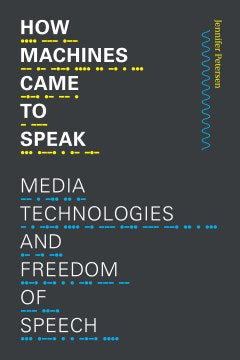
How Machines Came to Speak
Publisher,Duke Univ Pr
Publication Date,
Format, Paperback
Weight, 362.87 g
No. of Pages, 288
How Machines Came to Speak argues that the development of new media technologies-from the phonograph, film, and radio in the early twentieth century to computer code and algorithms today-has been integral to legal conceptions of free speech in the U.S. Traditional histories of free speech and the First Amendment focus on court cases with clear moral and political stakes in regulating speech, including cases that established worker picketing, criticism of war, and freedom of the press as aspects of free speech. Yet, according to Jennifer Petersen, the outcomes of these cases have often been determined by earlier legal precedent around how we define speech itself. Offering what she calls a media history of free speech," Petersen shows that over the course of the twentieth century, the Supreme Court's definition of speech grew to include everything from symbols and gestures (like saluting the flag) to messages without a clear speaker (like opinions broadcast over the radio) to corporate messages (like commercials and donations). As algorithms increasingly determine which news and culture we consume, Petersen argues that technology and discourse on communication are still central to how the Courts conceptualize free speech, and legal decisions concerning the parameters of speech are bound up in concerns about the constitution of personhood that have been shaped and reshaped by the role of technology as a mediator of social relations and identity"--

